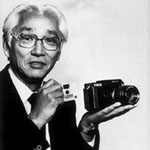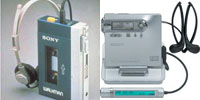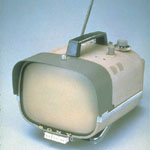No Longer Sure about Sony
Back to Contents of Issue: January 2004
|
|
|
|
by Leo Lewis |
|
|
Sony has survived legendary corporate setbacks and risen repeatedly from the ashes through sheer inventiveness and determination. The Betamax debacle in the 80s would have finished most companies forever. Instead, it invigorated Sony's sense of competitiveness and sent the design boys back to their labs to come up with the Walkman, the Handycam and the PlayStation.
But the momentum and energy that went into that comeback story 20 years ago seems to be missing now.
At a recent Tokyo press conference, Sony carefully laid the groundwork for its restructuring announcement. The restructuring program came in the wake of bad results and a rough ride at the hands of the market, which had by the end of October knocked more than 17 percent off the value of Sony shares since the start of the year. More than 10 percent of the group's 100 different business operations fail to make money, and in the last quarter the electronics division suffered a 74 percent plunge in operating profits.
The radical business changes, carried out under the title "Transfor-mation 60," are designed to spare investors from any repeat of the "Sony Shock" that rattled the market after a dire April results announcement. Last fiscal year Sony's group operating profits slumped to a miserable JPY185 billion, far below the group's previous estimate of a JPY280 billion profit.
An eye-watering 20,000 jobs were to slashed from across the entire group. Reacting to speculation over those cuts, many analysts pointed out that it would take more than downsizing alone to rectify Sony's profitability problems. Merrill Lynch electronics analyst Hitoshi Koriyama said before the announcement that he expected the group's program to produce around JPY200 billion in fixed cost reductions over the next three years. But, he added, "restructuring will not succeed through fixed cost reductions alone. Sony must persuasively explain its entire future growth strategy."
As a clear sign of its streamlining, Sony said that within the next six months it would set up a financial holding company to put its strongly performing life insurance, insurance and banking operations under one roof. This business, said group president Nobuyuki Idei, would thrive on obvious synergies and be a possible candidate for an initial public offering.
The timing of Sony's big news produced a stark reminder of the management blunders that have brought the company to its current state. Its Osaka-based domestic rival, Matsushita -- the company behind Panasonic -- pleased the market with a 32 percent leap in year-on-year interim profits. Matsushita's good fortunes were based on brisk sales of DVD players and flat-screen televisions, the very areas where Sony's sluggishness has been most evident. A few days before the restructuring announcement, Sony's group net profit fell 66 percent in the first half.
Many analysts, including Yuji Fujimori of Goldman Sachs, agree that in principle that "a strategic tie-up makes sense," but warned investors that it should be thought of as a long-term play. That advice came just one day after Sony was able to announce (to the great relief of the market) that its joint cellphone venture with Ericsson has finally started to bear fruit.
Part of the momentum behind the Sony-Samsung deal is thought to come from Sony's fear of being left behind in the next wave of widespread consumer equipment buying. Despite its leading share in standard cathode-ray tube (CRT) TVs, Sony is seen as having lingered too long in protecting that position, wasting time that rivals used to stride ahead in LCD technology. Sony's global TV sales were around 11 million units last year, but are falling sharply because such a high proportion of that figure relies entirely on CRT sales.
It was therefore significant that the event concluded with Idei's dec- laration that Sony will no longer build any Trinitron CRT television sets in Japan. Sony-watchers regard the Trinitron color TV (even more than the Walkman) as the technology that made the company the most profitable and most feared electronics firm in the world. Idei's sudden announcement amounted to a big bang marking the end of an era. @ |
|
Note: The function "email this page" is currently not supported for this page.


 THE DAYS WHEN THE Sony brand was known worldwide as a sure thing are gone, and the company's recent fall from grace (its run of sub-par results and subsequent restructuring schemes) has been far from spectacular. Every-thing about Sony -- its history, its leadership and its flag-bearer status for all things Japanese and high-tech -- means that the world has come to think of it as a company of commercial "big bangs." All the more poignant then that its collapse should now be accompanied by a whimper.
THE DAYS WHEN THE Sony brand was known worldwide as a sure thing are gone, and the company's recent fall from grace (its run of sub-par results and subsequent restructuring schemes) has been far from spectacular. Every-thing about Sony -- its history, its leadership and its flag-bearer status for all things Japanese and high-tech -- means that the world has come to think of it as a company of commercial "big bangs." All the more poignant then that its collapse should now be accompanied by a whimper.
 Many feel that Sony has not gone far enough. The announced changes are radical by Sony standards, but very few consider them enough to pull the electronics and entertainment conglomerate back from the brink of disaster.
Many feel that Sony has not gone far enough. The announced changes are radical by Sony standards, but very few consider them enough to pull the electronics and entertainment conglomerate back from the brink of disaster.
 Sony's urgency in latching onto the flat-screen TV revolution was demonstrated by its simultaneous announcement of a $2 billion joint venture with South Korea's Samsung to mass-produce next-generation liquid crystal screens. That two companies viewed as national flag-bearers of their respective electronics industries should consider such a venture was taken by analysts as an admission that Sony -- historically famous for its capacity to spot the next big thing -- had been caught napping.
Sony's urgency in latching onto the flat-screen TV revolution was demonstrated by its simultaneous announcement of a $2 billion joint venture with South Korea's Samsung to mass-produce next-generation liquid crystal screens. That two companies viewed as national flag-bearers of their respective electronics industries should consider such a venture was taken by analysts as an admission that Sony -- historically famous for its capacity to spot the next big thing -- had been caught napping.



